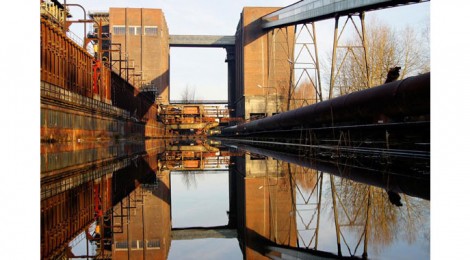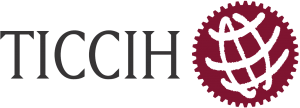
The 2nd Industrial Landscape Conference, Dortmund, Germany – February 26 – 27th 2015
The 2nd Industrial Landscape Conference, Dortmund, Germany, February 26 – 27th 2015. It’s a cooperation with the German sections of ICOMOS and TICCIH.
SYMPOSIUM
Title: Industrial Cultural Landscapes within the World Heritage Context
Date: 26. February – 27. February 2015
Place: Kokerei Hansa, Emscherallee 11, 44369 Dortmund
Organizers:
- ICOMOS-Deutschland
- TICCIH-Deutschland
in cooperation with the partners of the World Heritage project: The Ruhrgebiet Industrial Cultural Landscape
- Ministerium für Bauen, Wohnen, Stadtentwicklung and Verkehr des Landes Nordrhein-Westfalen
- Landschaftsverband Rheinland
- Landschaftsverband Westfalen-Lippe
- Regionalverband Ruhr
- Emschergenossenschaft
- Stiftung Industriedenkmalpflege and Geschichtskultur
Industrial Cultural Landscapes within the World Heritage Context
The term “cultural landscape” as an expression of local identity is coming more and more to the forefront in a large number of regional and urban planning processes: not least because the European landscape Convention that came into force in 2004 put the focus on cultural landscape as a planning object. This was the first global agreement on protecting and – primarily – developing and consciously planning the landscape. Long beforehand UNESCO had recognised the conservation value of landscapes in an “Agreement on Protecting the World’s Cultural and Natural Heritage” (World Heritage Convention 1972); and a World Heritage list of cultural and natural landscapes was introduced for the first time in 1992.
In recent years discussions on cultural landscapes have moved from outdated concepts of ideal, idyllic cultural landscapes to more pragmatic contemporary definitions. Alongside quasi-natural cultural landscapes there are a number of different types of urban and industrial landscapes that have hitherto not been clearly demarcated. To date there have been no binding criteria – especially with reference to industrial cultural landscapes – to enable us to do so.
In October 2013 international experts met up at a workshop given in the Technical University of Freiberg Mining Academy to discuss industrial and mining landscapes in the context of UNESCO World Heritage. Using a variety of different cases they discussed how to deal with this special type of cultural asset within UNESCO’s Protection and Conservation Agreement.
The current symposium aims to sharpen the concept of industrial landscape. We want to outline a definition and name the constituent parts of this particular type of landscape. Methodical and conceptional approaches will be presented and discussed using practical examples from Europe and analyses of the Ruhrgebiet landscape
Programme
Thursday, 26.02.2015
13.00 – 13.30 Greetings
- Michael von der Mühlen State Secretary in the Ministry of Construction, Housing, Urban Development and Traffic of the federal state of North Rhine Westphalia
- Prof. Dr. Jörg Haspel President of the German National Committee of ICOMOS | International Council on Monuments and Sites
- Dipl.-Ing. Norbert Tempel Spokesperson for the German TICCIH National Committee | The International Committee for the Conservation of the Industrial Heritage
I. Concepts of industrial and mining landscapes in World Heritage
Chair: Axel Föhl
13.30 – 13.50 Dr. Birgitta Ringbeck | Foreign office | Representative of the Federal Republic of Germany on the UNESCO World Heritage Committee Introduction: Industrial Cultural Landscapes within the World Heritage Context
13.50 – 14.30 Dipl.-Ing. Rolf Höhmann |Spokesperson for the ICOMOS Germany working group on “Monuments of Industry and Technology” Results of the Symposium on “Industrial and Mining Landscapes within the World Heritage Context”, Freiberg, 25.10.2013.
14.30 – 15.00 Discussion
15.00 – 15.30 Coffee
15.30 – 16.00 Gerhard Lenz M.A. | Director World Heritage Site Rammelsberg World Heritage site: Rammelsberg Ore Mine, the old town centre of Goslar and the Upper Harz Water Economy (Germany)
16.00 – 16.30 Dr. Peter Wakelin | The National Museum of Wales | Director of Collections and Research World Heritage Site: Blaenavon Industrial Landscape, Blaenavon (United Kingdom)
16.30 – 17.00 Jacques Crul | Director UNESCO Blegny Mine World Heritage Site World Heritage: Major Mining Sites of Wallonia (Belgium)
17.00 – 17.30 Summary and discussion 18.30 Dinner together (Hansa coking plant)
Friday, 27.02.2015
09.30 – 09.45 Greetings
Karl Jasper Chairman of the Board of Management of the Foundation for the Preservation of Industrial Monuments and Historical Culture
II. What do we mean by an “Industrial Cultural Landscape”?
9.45 – 10.15 Kerstin Manz |Referentin Deutsche UNESCO Commission The Concept of Cultural Landscapes in the Framework of the World Heritage Convention
10.15 – 10.30 Discussion
10.30 – 11.00 Prof. Dr. Winfried Schenk | University of Bonn Rural, Urban, Industrial Cultural Landscapes – possible demarcations
11.00 – 11.15 Discussion
11.15 – 11.45 Coffee
11.45 – 12.30 Prof. Dr. Hans – Werner Wehling |University of Duisburg-Essen Approaches to the Ruhrgebiet Industrial Cultural Landscape – Processes, Structures, Meanings
12.30 – 13.00 Discussion
13.00 – 14.30 Lunchtime snack and trip to the disused works railway track along the furnace gas pipeline to the Hansa bridge
III. Methodical approaches to describing/identifying industrial cultural landscapes
14.30 – 15.00 Marius Röhr, M. Sc. | Stiftung Industriedenkmalpflege and Geschichtskultur Maps of Cultural Landscape Transformation as an Instrument for Identifying Industrially Conditioned Structures using Oberhausen as an example
15.00 – 15.30 Prof. Hans-Werner Wehling | University of Duisburg-Essen Genetic Functional Systems as a Core Element in Industrial Landscapes, using the Zollverein Mining Complex in Essen as an example
15.30 – 16.30 Summary of the results and panel discussion – Potential recommendations for cultural landscape world heritage site applications
Conference language: German with simultaneous translation into English
Participation free of charge.
Registration via the registration form
per fax +49 (0)231 / 93 11 22-10 / per email: info@industriedenkmal-stiftung.de / per post
Final date for registration: Because the number of places is restricted we request you to register by Wednesday 11. Feb 2015 at the latest.
Symposium address
Kokerei Hansa (Waschkaue), Emscherallee 11, 44369 Dortmund
Organiser | Contact:
c/o Stiftung Industriedenkmalpflege and Geschichtskultur
Emscherallee 11, 44369 Dortmund
Tel +49(0)231-931122-0, Fax +49(0)231-931122-10
info@industriedenkmal-stiftung.de
www.industriedenkmal-stiftung.de
Contact partner: Marius Röhr Tel +49(0)231-931122-90 | info@industriedenkmal-stiftung.de
How to get there:
by public transport: From Dortmund Central Station take the U 47 in the direction of Westerfilde, alight “Parsevalstraße”, and walk in the direction of “Mailoh“, then turn right (ca. 8 mins.)
by car: from the A2 motorway: exit “Dortmund – Mengede”, and head for Dortmund;
the coking plant is on the left-hand side ca. 400 metres after the sign “Dortmund-Huckarde”
from the A45 motorway: exit Dortmund – Huckarde/Hafen, follow the expressway
(Mallinckrodtstraße) in the direction of Dortmund, then exit Huckarde, turn left in the direction of
Mengede; then head straight on for approx. 2 km (follow the signs “Kokerei Hansa

